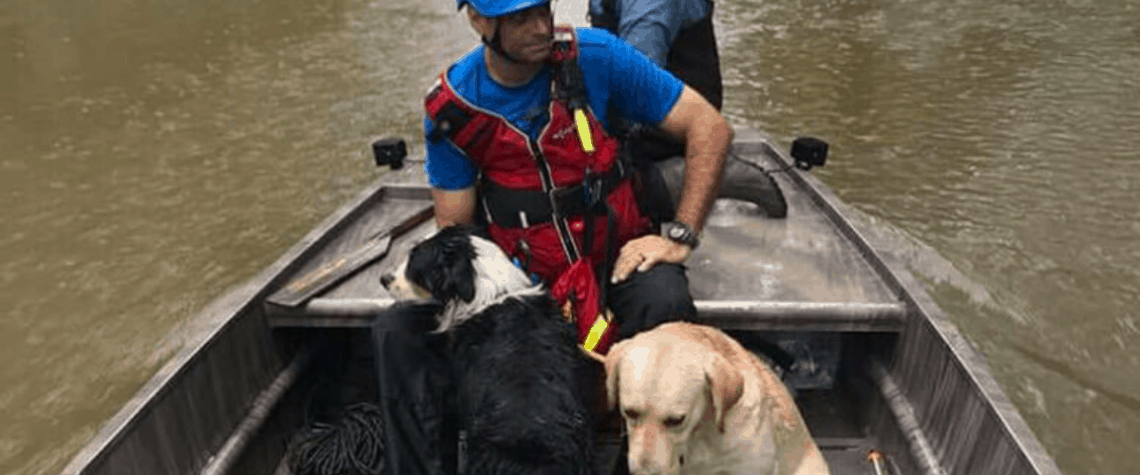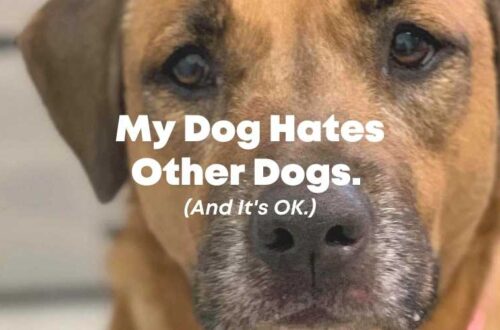
Keeping Your Dog Safe During a Flood or Hurricane
Hurricane season runs June 1-November 30th. And Houston, aka the Bayou City, has its fair share of storms and flooding. This year is expected to have an above normal number of named storms.
Here’s how to keep your dog and cat safe during a hurricane or flood.
How to Prepare for Your Dog Before a Hurricane
- Papers please. Put your dog and cat’s important documents, such as vaccination records, your vet’s contact information, and your pet’s microchip number, in a waterproof, sealed bag.
- Microchip managed. Make sure your pet’s microchip is registered, and tied to your phone number. Include a back-up contact in your registration, such as the phone number of family or friends.
- Collar & Tags. Confirm that your pet has a well-fitted collar and ID tags with your name, address and phone number.
- Life Jacket. Consider buying a life jacket or other flotation device for your dog. Even if he/she is a strong swimmer, flood waters are extremely powerful. Do not expect your dog to be able to swim out.
- Location location location. Know your pet’s hiding places. If flooding is a concern, you may have to leave very quickly. As a storm approaches, you may consider locking your cat in an interior bathroom to avoid it hiding under the bed. Monitor your dogs closely in your yard when they go our for a bathroom break..
- Make an emergency “go bag” for your cat or dog to take with you if you have to evacuate.
How to Make an Emergency Go-Bag for Your Pet
As we head into hurricane season, make an emergency “go-bag” and have it ready. This bag should contain essentials you will need while away from home. This includes:
- Bowls
- Extra leashes
- Your pet’s identification and registration numbers
- A photo of your pet (upload to Google Photo). Include detailed photos of front, both sides, and stomach. Do not rely on a random, blurry picture to identify your pet!!
- Vaccination records (take a picture and upload to Google Photo)
- Any medications and prescriptions
- 3-5 days supply of pet food and bottled water
- Pet first aid kit (DIY instructions below, or buy online)
- Familiar blanket for reassurance when in a strange place
- Collapsible carrier or crate
- Doggie poop bags or cat litter as applicable
- Calming spray, calming chews and/or thundershirt if your dog typically uses these in a storm. (I use NatureVet Quiet Moments Calming Chews for my dogs and always have them on hand.)
- Once complete, put this bag in your car so you don’t forget it!.
What to Do With Dogs During a Hurricane
- Stay inside. During a storm, keep your pets inside. For potty breaks, leash your dog and walk it outside, only when local weather services show it is safe to do so.
- Evacuate if needed. Evacuate if you are told to do so, and take your pets with you.
- Have a Plan. Figure out where you’ll take your pet if you have to evacuate quickly. This might be a friend’s home or a pet-friendly hotel located outside the area. You can also call your local Red Cross office to find a pet-friendly shelter. It is wise to have several options in mind, in case certain roads are blocked and you have to change direction.
Yes, The PETS Act requires that household pets and service animals be included in any emergency preparedness operational plans by state and local authorities. Bring your animal with you. But be prepared to bring everything your pet will need for their stay.
If you evacuate and you must leave your pet behind:
- Do not tether, crate or restrain them.
- If you live in a two-story house, keep them in a secured room, upstairs, with plenty of food and water.
- If you don’t have a two-story house, make sure your pets have escape routes with access to higher ground.
- Make sure your pet has a collar and ID tags. As a last resort, write your name and phone number on their stomach in permanent marker.
- As Hurricane Harvey proved all too well, pets are difficult to locate and reunite with their families after a disaster.
What to Do With Dogs After a Hurricane
- Stay out of floodwater. Don’t allow your pets to go near water or other liquids on the ground; debris from the hurricane may have contaminated the area or live power lines may be laying in the water.
- Stay on-leash. Don’t let your dog outside without a leash immediately following a flood. There may be broken glass, nails, sharp sticks, or other dangerous objects that could hurt him
- Monitor behavior. Monitor your pets’ behavior. Even the most well behaved pets can act-out when they are anxious and in an unfamiliar or stressful situation.
- Be calm. Don’t panic! The calmer you are, the calmer your dog will be.
How to Make a DIY Dog First Aid Kit
You can easily make a DIY Pet First Aid kit with materials from the local pharmacy. (But… it might be cheaper to just buy one online… see some options below.)
- Absorbent gauze pads
- Adhesive tape
- Cotton balls or swabs
- 3% hydrogen peroxide to induce vomiting (always check with veterinarian or animal poison control expert before giving to your pet)
- Ice pack
- Disposable gloves
- Scissors with blunt end
- Tweezers
- Antibiotic ointment
- Oral syringe or turkey baster
- Liquid dishwashing detergent (for bathing)
- Towels
- Small flashlight
- Alcohol wipes
- Styptic powder to stop bleeding
- Saline eye solution
- Artificial tear gel
Rather than make a kit, you can also purchase a dog first aid kit from Amazon. I keep my kit in the cabinet with my dogs treats and poop bags, for easy access. Here are some that I found online. They aren’t exactly what I have, but very close.
You may also want to have a reference book for pet emergencies. This one on Amazon is handy to have around.
Storm Safety Tips for Humans
We care about people in addition to animals!
Here are links to some helpful hurricane tips from ElectricityPlans.com, an online electricity shopping site that also has energy efficiency and electric safety tips.





2 Comments
Elizabeth
This is so helpful! Thank you!
Pingback: